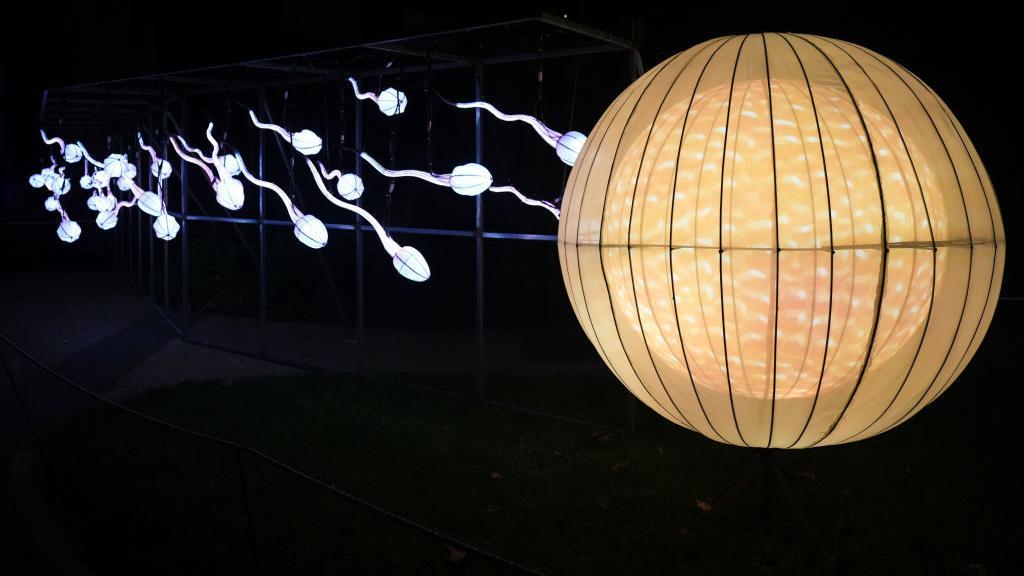
E be like say di quality of sperm don dey reduce around di world but dis na cause of infertility wey pipo no dey too discuss.
Now scientists dey discover wetin fit dey behind di problem.
“We fit sort you out. No problem. We fit help you,” di doctor tell Jennifer Hannington.
Den e turn to her husband, Ciaran, and tok say: For dis area we no get much wey we fit do for you.”
Di couple, wey dey live for Yorkshire, England, don dey try to get pikin for two years.
Dem know say e fit dey hard for dem to conceive as Jennifer get polycystic ovarian syndrome, dat na one condition wey fit affect fertility.
Wetin dem no expect na say problem dey for her husband side, too.
Tests reveal say di issue include low sperm count and low motility (dat na movement) of sperm.
Di worst of all be say, dis issues na wetin dey harder to treat dan di one wey dey disturb Jennifer – maybe sef e fit even dey impossible to treat.
Her husband, Ciaran still remember im reaction: “Shock. Grief. I dey for complete denial.
I tink say di doctors get am wrong.”
E bin always know say e want to be papa. “I feel like I go let my wife down.”
Ova di years, im mental health come dey worst. E begin to spend more time alone, dey stay for bed and dey rely on alcohol for comfort. Den di panic attacks come in.
“I hit crisis point,” Ciaran tok. “Na deep, dark place.”
Male infertility dey contribute to approximately half of all cases of infertility and dey affect 7% of di male population.
However, pipo no dey too tok about am like di way wey dem dey tok about female infertility, part of di reason na sake of social and cultural taboos wey surround di mata.
For di majority of men wit fertility problems, no explanation don dey for di cause – and stigma mean say many dey suffer in silence.
Research suggest say di problem fit don plenti.
Factors wey include pollution don prove to affect men fertility, especially sperm quality – wit likely big effect on individuals, and di whole societies.
Fertility crisis wey dey hidden
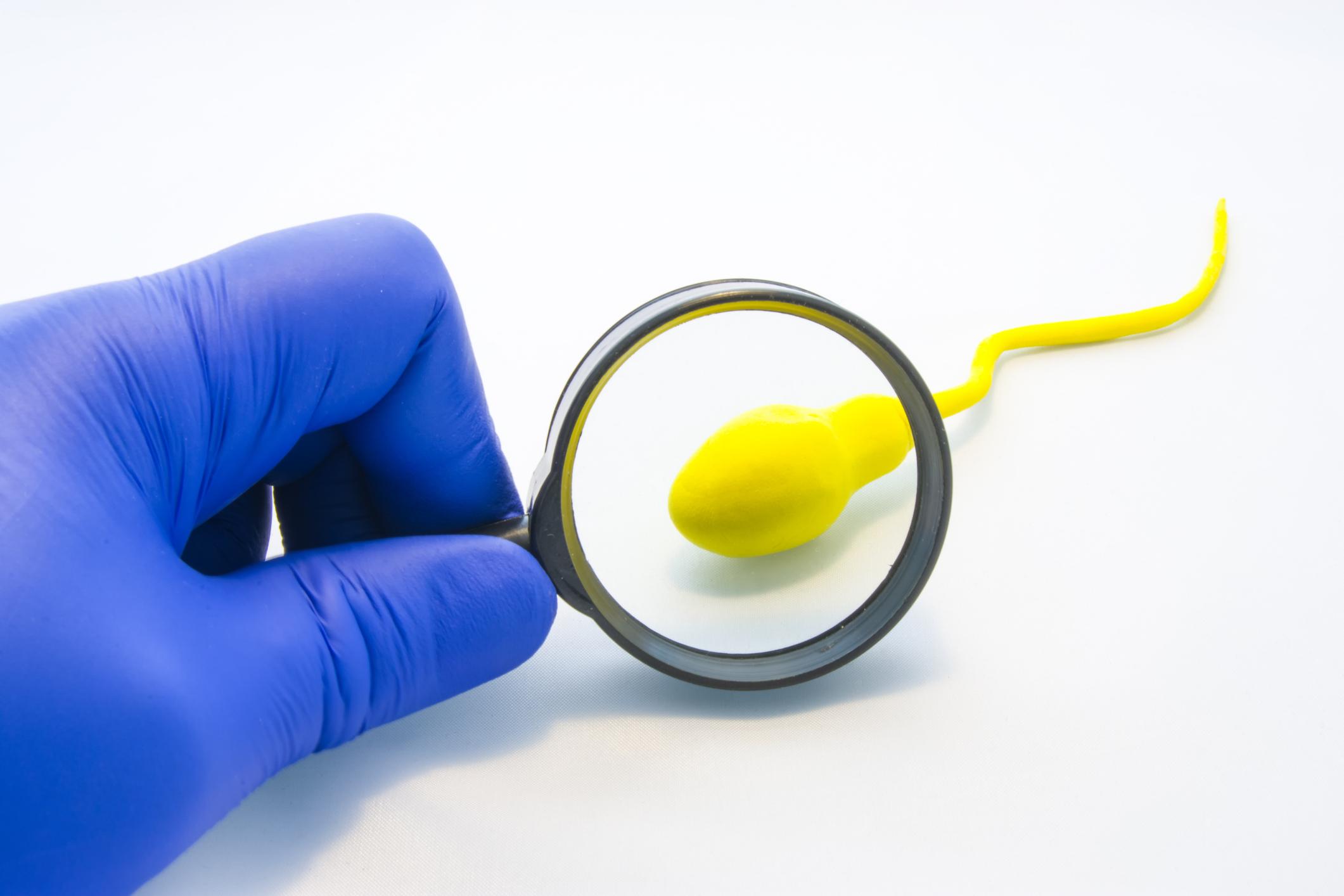
Di world population don increase well-well ova di past 100 years.
Just 70 years ago – within human being lifetime – na only 2.5 billion pipo dey on Earth.
For 2022, di world population climb go eight billion. However, di rate of population growth don slow, mainly sake of social and economic factors.
Birth rates worldwide don dey low levels.
Ova 50% of di world population dey live for kontries wit fertility rate below two children per woman – dis don result to population wey be say without migration, e go gradually shrink.
Di reason for dis decline in birth rates include positive developments, like women wey don dey make dia own money and get control ova dia reproductive health.
On di oda hand, for kontries wit low fertility rates, research show say many couples for like get more pikin dan wetin dem get but dem stop sake of social and economic reasons, like lack of support for families.
For di same time, decline fit also dey for different kind of fertility, wey dey known as fecundity – meaning, pesin physical ability to produce offspring.
Research suggest say di whole range of reproductive problems in men dey increase, including declining sperm counts, decreasing testosterone levels, and increase rates of erectile dysfunction and testicular cancer.
Swimming cells
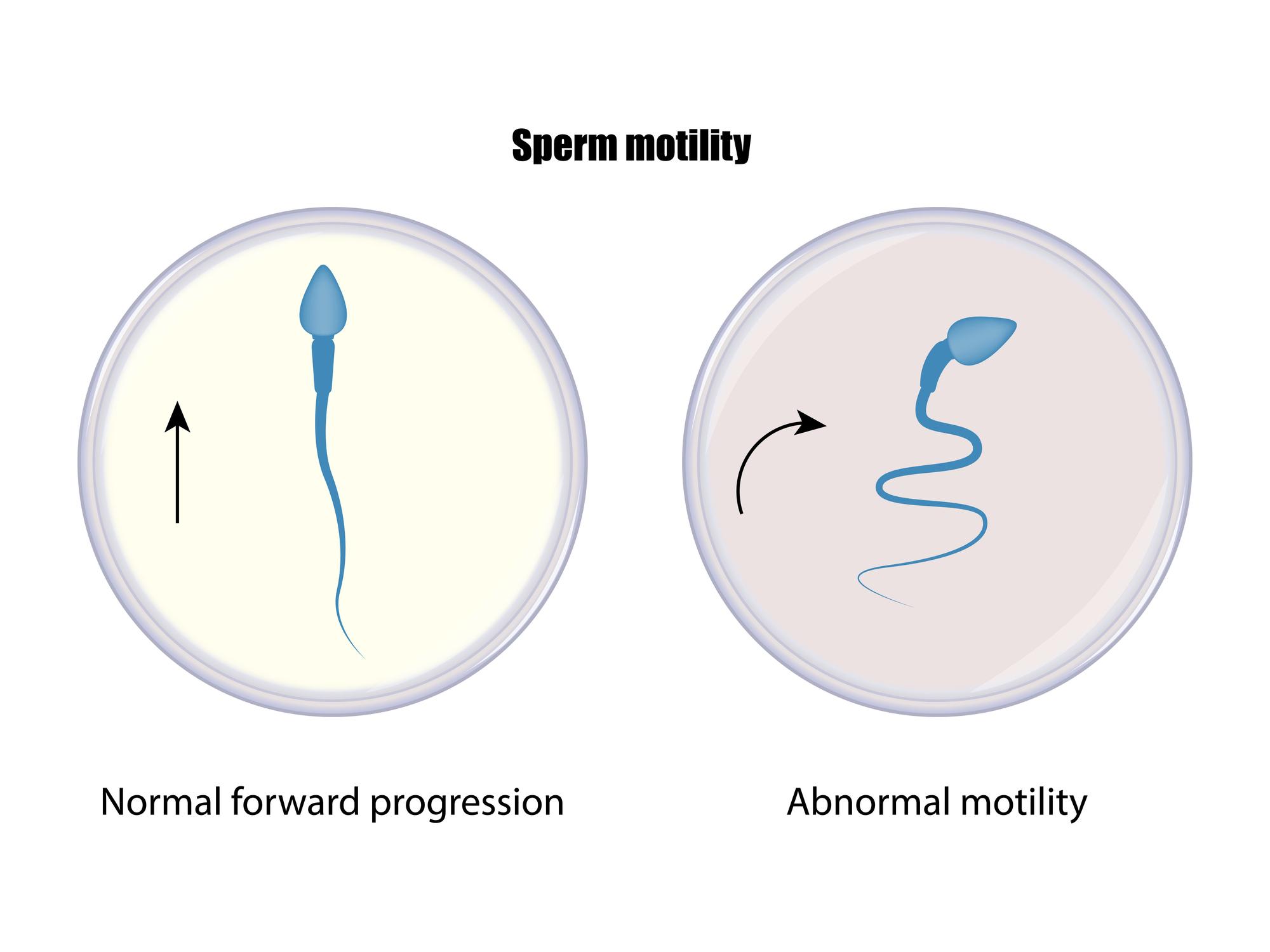
“Sperm na superb cells,” according to Sarah Martins Da Silva, wey be clinical reader in reproductive medicine for di University of Dundee and practicing gynaecologist.
“Dem dey tiny, dem dey swim, dem fit survive outside di body. No oda cells fit do dat. Dem dey extraordinarily specialised.”
As widely known, small changes fit get powerful effect on dis highly specialised cells, and especially, dia ability to fertilise egg.
Di important aspects for fertility na dia ability to move very well (motility), dia shape and size (morphology), and how many dem dey for a given quantity of semen (wey dey known as sperm count).
Na di aspect wey doctor dey examine wen any man go for fertility check.
“In general, wen you get below 40 million sperm per millilitre of semen, you start to dey see fertility problems,” Hagai Levine, professor of epidemiology for di Hebrew University of Jerusalem tok.
Levine explain say Sperm count dey closely linked to fertility chances. While higher sperm count no really mean higher probability of conception, below di 40 million/ml threshold di probability of conception dey drop off quickly.
For 2022, Levine and im collaborators publish one review of global trends in sperm count.
E show say sperm counts fall on average by 1.2% per year between 1973 to 2018, from 104 to 49 million/ml.
From di year 2000, dis rate of decline increase to more dan 2.6% per year.
Levine argue say dis acceleration fit be sake of epigenetic changes, meaning, changes to di way wey genes dey work, wey dey caused by environmental or lifestyle factors.
One separate review also suggest say epigenetics fit play a part in changes for sperm, and male infertility.
“No sign wey show day dis fit be cumulative across generations,” e tok.
Arguement dey on top di idea wey say epigenetic changes fit dey inherited across generations, but evidence dey ground wey suggest say e fit dey possible.
“Dis [declining sperm count] na marker of poor health of men, maybe even of mankind,” Levine tok.
“We dey face public health crisis – and we no know if e dey reversible.”
Research suggest say male infertility fit predict future health problems, though dem no fully understand di exact link.
One possibility na say certain lifestyle factors fit contribute to both infertility, and oda health problems.
“While di experience of wanting a child and and at di same time no dey able to get pregnant dey frustrating, dis na much bigger problem,” Da Silva tok.
Pesin lifestyle changes fit no dey enof to stop di decline in sperm quality.
Plenti evidence suggest say e get wider, environmental threat: toxic pollutants.
Toxic world
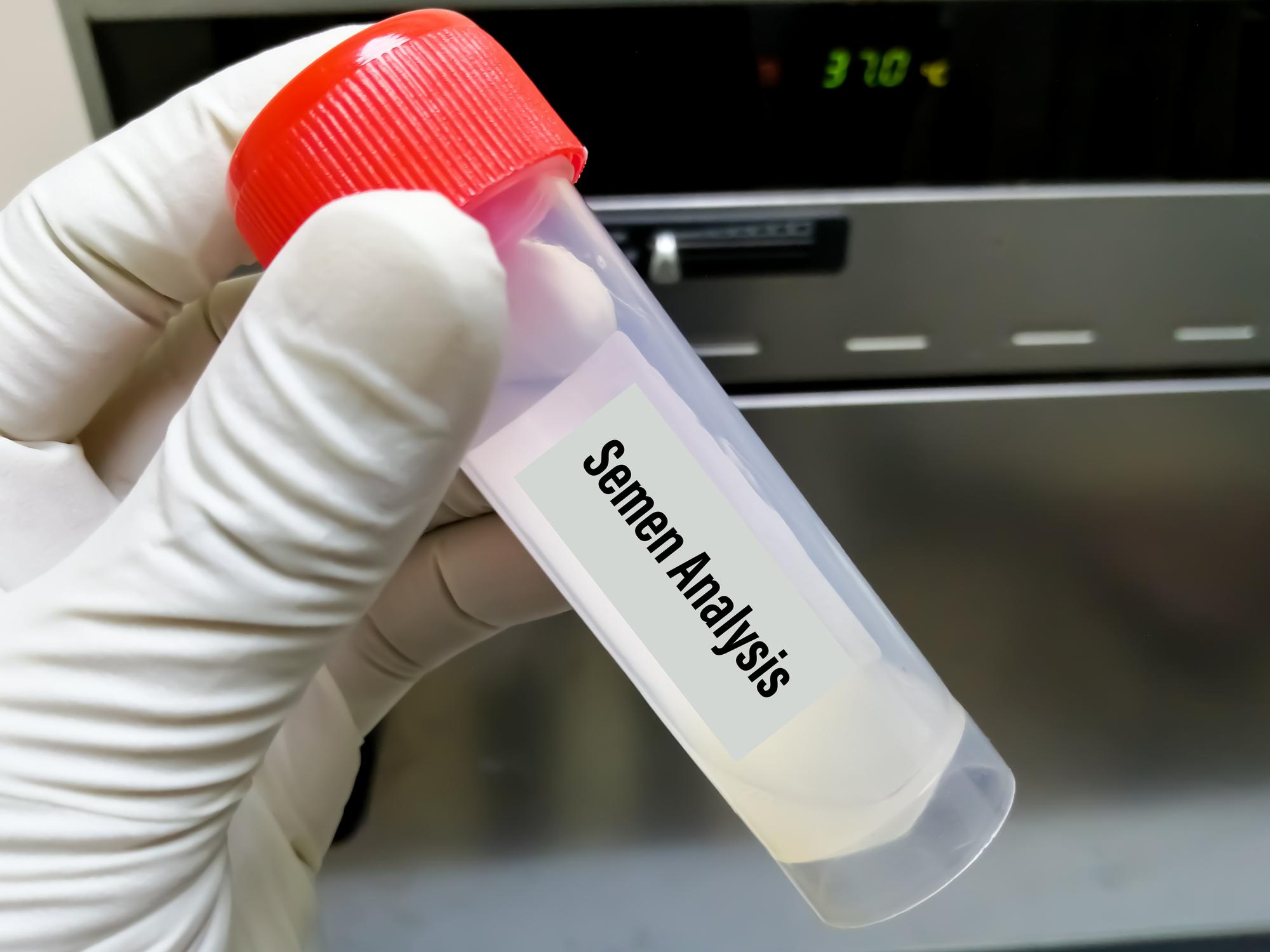
Rebecca Blanchard, veterinary teaching associate and researcher for di University of Nottingham, UK, dey investigate di effect of environmental chemicals wey dey within di home on male reproductive health.
She dey use dogs as a sentinel model – one kind of early-warning alarm system for human health.
“Di dog share our environment,” she tok. “E dey live for di same household and dey exposed to di same chemical contaminants as us. If we look at di dog, we fit see wetin dey go on for di human.”
Her research concentrate on chemicals wey dem see for plastics, fire retardants and common household items. Dem don ban some of dis chemicals, but still e dey linger for di environment or older items.
Her studies don reveal say dis chemicals fit disrupt our hormonal systems, and harm di fertility of both dogs and men.
“We find reduction in sperm motility for both di human and di dog,” Blanchard tok.
“Increase dey in di amount of DNA fragmentation.”
Sperm DNA fragmentation refers to damage or breaks in di genetic material of di sperm.
Dis fit get impact wey pass conception: Blanchard explain say as levels of DNA fragmentation dey increase, so do instances of early-term miscarriages.
Di findings togeda wit oda research wey show di damage to fertility caused by chemicals wey dem see in plastics, household medications, for di food chain and for air.
E dey affect men as well as women and even babies.
Dem don find black carbon, forever chemicals and phthalates to reach babies inside utero.
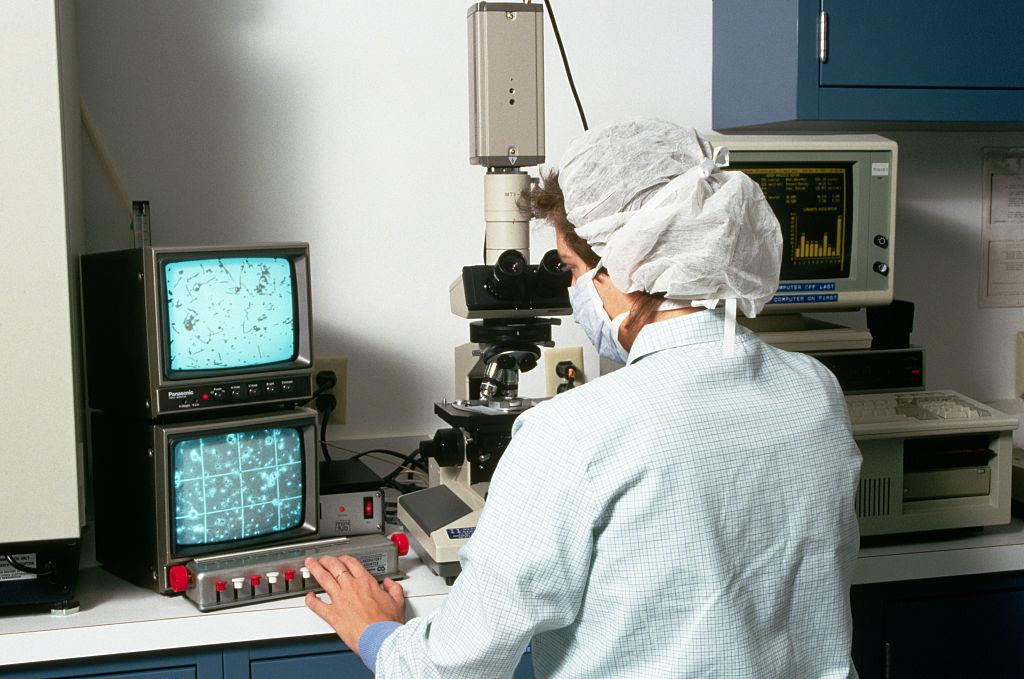
Climate change fit also negatively impact male fertility, wit several animal studies wey suggest say sperm dey especially vulnerable to di effects of increasing temperatures.
Heatwaves don show to damage sperm inside insects, and similar impact na im dem don been observe in humans.
One 2022 study find out high ambient temperature – due to global warming, or working in hot environment – dey negatively affect sperm quality.
Poor diet, stress and alcohol
Alongside dis environmental factors, individual problems fit also harm male fertility, like poor diet, sedentary lifestyles, stress, and alcohol and drug use.
In recent years, difference don dey concerning pipo becoming parents later in life – and while women dey often reminded about dia biological clock, no be age dem look as di issue for male fertility.
Now, dat idea dey change. One advanced paternal age dey associated with lower sperm quality and reduced fertility.
Calls don plenti for greater understanding of male infertility and new approaches for dia prevention, diagnosis and treatment – as well as increase awareness of di urgent need to tackle pollution.
Meanwhile, anytin dey wey pesin fit do to protect or boost dia sperm quality?
Exercise and healthier diet fit be good start, since dem don dey linked to improved sperm quality.
Blanchard recommends choosing organic food and plastic products free of BPA (Bisphenol A), one chemical wey dey associated wit male and female fertility problems.
“Small tins dey wey you fit do,” she tok.
And, Hannington tok say, don’t suffer in silence.
Afta five years of treatment and three rounds of ICSI (Intracytoplasmic Sperm Injection), one IVF technique wia e be say dem go inject single sperm into di centre of an egg, im and e wife get two children.
For pipo wey gatz to pay for fertility treatments demsef, like procedure fit however no dey affordable.
For di US, one single round of IVF fit cost upwards of $30,000 (£24,442) and insurance coverage for IVF fit depend on di state you dey live in and who employ you.
And Hannington say e still feel say di mental stress from wetin e pass through.
“I dey grateful for my children evri day, but you just no fit forget,” e tok. “e go always be part of me.”










